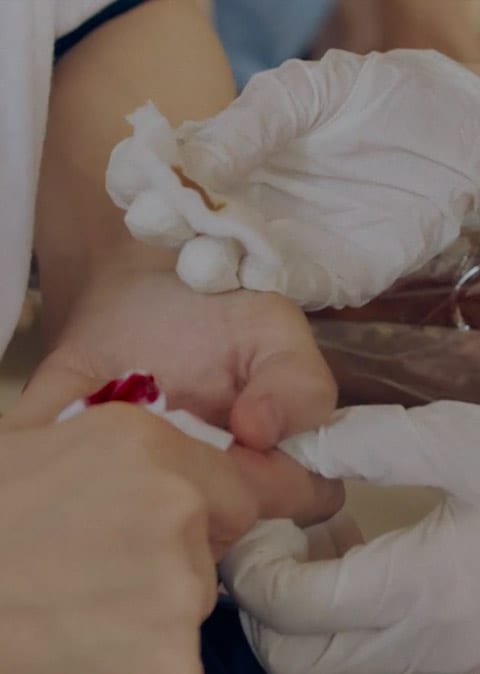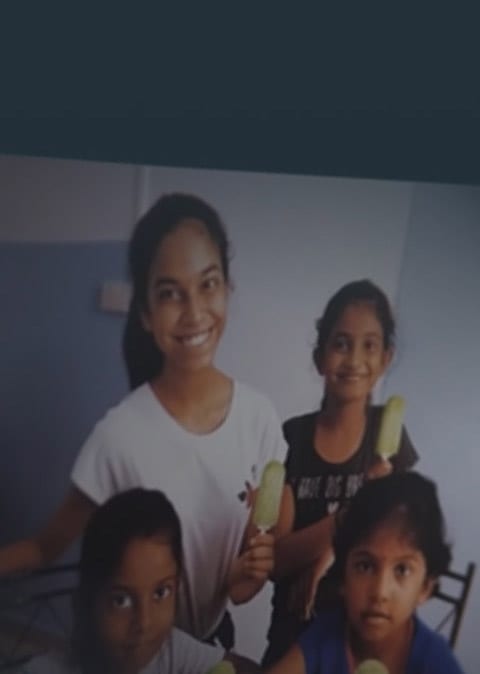Can Everyone Be A Philanthropist?
Philanthropy has become synonymous with the elites, foundations like the Ngee Ann Kongsi Foundation, and ultra-high-net-worth individuals giving away billion-dollar donations to charitable causes. Realistically, not everyone has millions of dollars to give away, so can everyone be a philanthropist?
The National Volunteer and Philanthropy Centre’s (NVPC) Knowledge and Insights team sought to answer this during the first session of our inaugural Singapore Giving Series, titled “Everyone can be a Philanthropist”. On 3 December 2022, we partnered with the National University of Singapore, the Community Chest Singapore (ComChest), and the Community Foundation of Singapore (CFS) to hold a forum to gather thoughts and insights. Keynote speaker Prof. Chulhee Kang, panellists from NVPC, ComChest, CFS, the Children-at-Risk Empowerment Association (CARE Singapore), the Majurity Trust, #SmilesSalamSG, as well as various participants from all walks of life shared and engaged in a rich discussion on the potential of reframing philanthropy in Singapore. The discussions covered the origins of the term and the state of philanthropy in Singapore, reimagined the concept of philanthropy, and explored how to make philanthropy a social norm in Singapore.
‘Philos’ and ‘Anthropos’
Etymologically, “philanthropy” is not about “the giving away of millions” or is specific to the wealthy in society. It may surprise some to know that the term originates from the ancient Greek words philos and anthrōpos, which, taken together, mean: “the love of humanity”.[1] “Philanthropia”, or “loving what is to be human” is defined by the Platonic Academy’s philosophical dictionary as “a state of being productive of benefits to humans”.[2] The act of philanthropy in ancient Greece was linked to freedom, strengthening urban culture, and communal solidarity. The Romans later translated the term philanthropia as “human-ness”.[3]
The term evolved throughout the centuries to respond to various challenges of the ages, such as the industrial revolution, urbanisation, and changing needs. Today, philanthropy is typically used to distinguish those giving large amounts from those giving lesser amounts.
However, we are seeing the move towards reclaiming the term philanthropy. Firstly, it is not about giving just money, but any effort – be it one’s time, talent, treasure, ties or testimony – to address the root causes of social issues and promote society’s welfare and quality of life. Secondly, it is not about the amount, but rather the strategic, deliberate, systematic and long-term approach to giving. Therefore, anyone can be a philanthropist despite their status or wealth.
State of Philanthropy in Singapore
Philanthropy in Singapore is still largely recognised as the giving of large amounts of money. There are many well-established foundations, corporate foundations, and ultra-high net worth individuals who have contributed significantly to addressing the needs of society and establishing institutions to advance society. Their efforts are commendable, and we need more of such generous donors. There is also a need to tap on the masses to practice philanthropy. If we are to adopt the definition as stated above, it is possible to harness the power of the masses if more consideration and planning is done by individuals. However, NVPC’s Individual Giving Study (IGS) and Corporate Giving Study (CGS) indicate that individuals and corporates do not plan their giving, and tend to participate in occasional or ad-hoc giving. For example, more than 70% of individuals give occasionally. Similarly, for corporate givers, more than half give on an ad-hoc or seasonal basis, and more than 80% do not budget for giving.
Reimagining Philanthropy
Philanthropy, the love for humanity, can be practised by everyone, available everywhere, and done every day. Everyone can exhibit this love for humanity in their own ways and means. For example, Mr Woong-sun Shin, a Korean public street cleaner, donated 20% of his salary to a charity for over seven years and gave more than $4,000 per year, despite suffering from a rare, painful spinal disease. In an interview, Mr Shin commented: “even 1% of USD 3,000 would be USD 30”, and therefore “anyone can give back to others”.[4]
However, in the commonly understood definition of philanthropy, he may not be known as a philanthropist as his donations are not in the hundreds of thousands or millions. Yet, his giving encapsulates the essence of philanthropy for he had planned, deliberated, and given on a sustained basis for the welfare of others. We also hear of such stories in Singapore – some participants shared their experiences of stepping forward to give strategically, and how charities provide impact reports to help ad-hoc givers see the benefits of their giving on a long-term basis.
The move towards more strategic and sustainable giving builds communal solidarity and strengthens social compact. Compare the following situations: (a) one million people giving $1 each, or (b) one person giving $1 million. Social compact is strengthened when a million people step into their roles of a philanthropist and give $1, but not as much when one person gives $1 million. Society is transformed when everyone has a stake and contributes meaningfully for the greater good.
Philanthropy also transforms the giver. A philanthropist is both a giver and a receiver. Philanthropists receive psychological and physiological benefits from giving: a 2008 study by Michael Norton from Harvard Business School revealed that people are happier when they spend money on others.[5] The study also found that those who reported spending more on others reported a greater level of happiness, while how much they spent on themselves did not affect their happiness.[6] The act of giving also has physiological benefits – another study reported a relationship between giving and lower blood pressure.[7] Giving is evidently a mutually beneficial relationship, and while it should not be considered a transactional process, it is undeniable that the happiness and health one gains after giving are much more than the amount one gives.
More than anything, it is essential to understand that philanthropy goes beyond just monetary donations – it also encompasses giving one’s time, talent, treasure, ties, and testimony. We can offer much to those who need it by volunteering our time or skills, donating, bridging people through networks, advocating for causes that resonate with us, and, importantly, sharing our stories of philanthropy. The power of stories is usually underestimated; they not only point people to available giving opportunities but also inspire others to step forward to start their philanthropic journey.
Normalising Philanthropy in Singapore
If everyone can be a philanthropist, how do we develop them and make philanthropy a social norm? The following pointers detail some insights shared during our discussion.
Starting Philanthropy from Young
Introducing children to giving and inculcating the values of caring and sharing at a young age is key to developing philanthropy as a social norm in Singapore. The younger one starts, the easier it is to develop social awareness and empathy. In this regard, parents play a crucial role in imparting values and socialising their children, insofar as philanthropy is a value that can be taught and passed down to future generations. Take #SmilesSalamSG for instance – a ground-up initiative addressing food security and poverty initiated by a pair of parents who wanted their children to embody the important values of empathy, kindness, and graciousness. In doing good together as a family, parents can spend precious time with their children while contributing to a better society. Moreover, the enduring effect of family generosity does not diminish easily, and its duration is much longer than individual giving.
Schools play a critical role too. While secondary schools in Singapore currently have the Values in Action (VIA) programme to nurture socially responsible citizens who contribute meaningfully to the community, we can start even earlier than that.
In Korea, the non-governmental organisation Good Neighbors has helped kindergartens and elementary schools incorporate philanthropic education into their curriculum. Parents benefited from this curriculum as well. The programme doubled the converted regular donations from participating elementary schools and kindergartens.
In Singapore, Sharity Elephant, first introduced in 1984 by the Community Chest, taught children to care for and share with others. In 2016, the pink elephant made a comeback to encourage students to be more compassionate by performing good deeds at home, in school and in the community. Education in schools and at home will ensure the continuity of philanthropy in future generations.
Doing Better Together
When we give collectively, we unlock the power of group dynamics and elevate the quality of our giving. While individual donations are relatively straightforward and allow one to give directly, pooled donations have the power to impact greater change and influence others in the group to give more. To this end, the Community Foundation of Singapore recognises the importance of amplifying the impact of philanthropy across diverse segments of society, and spearheaded the use of community impact funds in Singapore. These funds address under-supported causes and enable disadvantaged groups to live more dignified lives. Foundations like CFS can also matchmake donors to programmes, especially if they are not cognisant of the various needs in different sectors. By joining other donors to give to such funds, individuals can see their treasure create lasting and impactful change in Singapore.
Giving at Everyday Touchpoints
Giving can understandably be daunting sometimes, but everyday touchpoints can help ease possible fears and mental obstacles preventing people from giving regularly. These touchpoints could include checkout points when customers are making payments. For instance, small stores in Korea act as intermediaries between public charities and citizens. These stores are accredited by Community Chest Korea’s ‘Good Store Program’ and have contributed significantly to giving amounts over the years. In addition, these stores act as an important channel to broaden the base of citizens’ participation in giving. In the online realm, the Naver Happybean, an online donation service, the “Saving to Give” function, allows users to set aside a small amount daily or weekly until they are ready to donate.[8] ComChest Singapore also ran an initiative that enabled commuters to make donations by tapping their EZ-link cards on billboards at bus stops and train stations. Ultimately, seeing more avenues to practise philanthropy in everyday touchpoints creates a sense of familiarity towards giving, and changes the perception that giving has to be a one-time affair.
Make Philanthropy Part of Plans
Whether or not you are a seasoned philanthropist, making philanthropy part of your plans will help you to take giving to the next level. In terms of donations, planning your giving via legacy giving or charitable bequests allows you to leave significant amounts to a recipient or cause that truly resonates with you, and grants you the opportunity to have more say over how your gift is used. In addition, this form of giving is a sustainable source of income for non-profits, especially during tough times. Planned and committed giving may also look something like understanding how financial events like recessions may affect your income, and therefore budgeting wisely to ensure the continuity of your donations.
Conclusion
Philanthropy is not about bearing a title; it is stepping into our role as a human caring for the welfare of others. To be able to give is a gift, and recognising that is our responsibility. Everyone can be a philanthropist – and everyone’s journey starts today!
The Knowledge and Insights team at NVPC would like to express our gratefulness and appreciation to the following partners for their valuable insights and participation at the event:
- Professor Chulhee Kang (S R Nathan Professor, National University of Singapore)
- Charmaine Leung (Group Director, Philanthropy & Engagement Group, NCSS, and Managing Director, Community Chest)
- Charles Tan (Director, Philanthropy, the Majurity Trust)
- Anthony Chng (Director, Enterprise, CARE Singapore)
- Azlina Ahmad (Founder, #SmilesSalamSG)
- Ashley Chan (Assistant Director, Partnerships & Engagement, CFS)
- Irin Ng (Principal Consultant, Centre for Applied Philanthropy, CFS)
- Liow Wei Yuan (Consultant, Partnerships & Engagement, CFS)
We would also like to acknowledge the following people and teams for their kind support at the event:
- Dr. Mathew Mathews (Principal Research Fellow and Head of Social Lab, Institute of Policy Studies, NUS)
- Tony Soh (CEO, NVPC)
- NVPC’s Marketing and Advocacy Team
- NVPC’s Community Matters Team
We welcome any thoughts and contributions on this article. Please write to [email protected] if you wish to contribute or send us your comments.
[1] “Philanthropy (n.),” Etymology, accessed December 6, 2022, https://www.etymonline.com/word/philanthropy.
[2] “History of Philanthropy,” ELPIS, accessed December 14, 2022, http://www.elpis.org.gr/history-of-philanthropy/.
[3] “History of Philanthropy,” ELPIS, accessed December 14, 2022, http://www.elpis.org.gr/history-of-philanthropy/.
[4] askasianboss, “This Korean Janitor Making $27K Donates 20% to Charity L Everyday Bosses #35,” YouTube (YouTube, February 5, 2020), https://www.youtube.com/watch?v=PUXVHsvJZHg.
[5] Colleen Walsh, “Money Spent on Others Can Buy Happiness,” Harvard Gazette (Harvard Gazette, April 17, 2008), https://news.harvard.edu/gazette/story/2008/04/money-spent-on-others-can-buy-happiness/.
[6] Colleen Walsh, “Money Spent on Others Can Buy Happiness,” Harvard Gazette (Harvard Gazette, April 17, 2008), https://news.harvard.edu/gazette/story/2008/04/money-spent-on-others-can-buy-happiness/.
[7] Rachel L. Piferi and Kathleen A. Lawler, “Social Support and Ambulatory Blood Pressure: An Examination of Both Receiving and Giving,” International Journal of Psychophysiology 62, no. 2 (2006): pp. 328-336, https://doi.org/10.1016/j.ijpsycho.2006.06.002.
[8] “Naver Happybean – Changing the World One Donation at a Time,” Inquivix, August 12, 2022, https://inquivix.com/digital-marketing-in-south-korea/naver-happybean/.



















